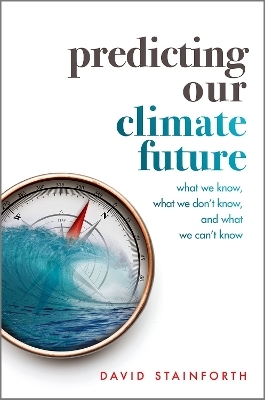
Predicting Our Climate Future
Oxford University Press (Verlag)
978-0-19-881293-7 (ISBN)
This book is about how climate science works and why you should absolutely trust some of its conclusions and absolutely distrust others.
Climate change raises new, foundational challenges in science. It requires us to question what we know and how we know it. The subject is important for society but the science is young and history tells us that scientists can get things wrong before they get them right. How, then, can we judge what information is reliable and what is open to question?
Stainforth goes to the heart of the climate change problem to answer this question. He describes the fundamental characteristics of climate change and shows how they undermine the application of traditional research methods, demanding new approaches to both scientific and societal questions. He argues for a rethinking of how we go about the study of climate change in the physical sciences, the social sciences, economics, and policy. The subject requires nothing less than a restructuring of academic research to enable integration of expertise across diverse disciplines and perspectives.
An effective global response to climate change relies on us agreeing about the underlying, foundational, scientific knowledge. Our universities and research institutes fail to provide the necessary clarity - they fail to separate the robust from the questionable - because they do not acknowledge the peculiar and unique challenges of climate prediction. Furthermore, the widespread availability of computer simulations often leads to research becoming divorced from understanding, something that risks undermining the relevance of research conclusions.
This book takes the reader on a journey through the maths of complexity, the physics of climate, philosophical questions regarding the origins and robustness of knowledge, and the use of natural science in the economics and policy of climate change.
After studying Physics at Oxford, David Stainforth worked on ocean modelling and then studied for a Masters on Environmental Management before working as a renewable energy consultant. He returned to academia to pursue research on computer models of the atmosphere before joining Professor Myles Allen to develop the climateprediction.net project, a public-resource, distributed-computing project which engaged hundreds of thousands of people worldwide with climate modelling. He went on to an Associate Professor position at Exeter University and then to LSE, pursuing research on the philosophy of climate science, climate economics, climate modelling and climate decision making under deep uncertainty.
Section 1
Chapter 1: The obvious and the obscure
Chapter 2: A problem of prediction
Chapter 3: Going beyond what we've seen
Chapter 4: The one-shot bet.
Chapter 5: From chaos to pandemonium
Chapter 6: The curse of bigger and better computers
Chapter 7: Talking at cross purposes
Chapter 8: Not just of academic interest
Section 2
Challenge 1: How to balance justified arrogance with essential humility.
Chapter 9 - Stepping up to the task of prediction
Chapter 10 The Times They Are A Changin'
Chapter 11 Starting from scratch
Chapter 12 Are scientists being asked to answer impossible questions?
Challenge 2: Tying down what we mean by climate and climate change.
Chapter 13 The essence of climate
Chapter 14 A Walk in Three Dimensions
Chapter 15 A walk in three dimensions over a two dimensional sea
Challenge 3: When is a study with a climate model a study of climate change?
Chapter 16 Climate change in climate models
Challenge 4: How can we measure what climate is now and how it has changed?
Chapter 17 Measuring climate change
Challenge 5: How can we relate what happens in a model to what will happen in reality?
Chapter 18 - Can climate models be realistic?
Chapter 19 More models, better information?
Chapter 20 How bad is too bad?
Challenge 6: How can we use today's climate science well?
Chapter 21 - What we do with what we've got
Challenge 7: Getting a grip on the scale of future changes in climate?
Chapter 22 - Stuff of the Genesis myth
Chapter 23 Things ... can only get hotter
Challenge 8: How can we use the information we have, or could have, to design a future that is better than it would otherwise be?
Chapter 24 - Making it personal
Chapter 25 - Where physics and economics meet.
Challenge 9: How can we build physical and social science that is up to the task of informing society about what matters for society?
Chapter 26 - Controlling factors.
Chapter 27 - Beyond comprehension? No, just new challenges for human intellect.
| Erscheinungsdatum | 09.10.2023 |
|---|---|
| Verlagsort | Oxford |
| Sprache | englisch |
| Maße | 164 x 240 mm |
| Gewicht | 800 g |
| Themenwelt | Mathematik / Informatik ► Mathematik ► Angewandte Mathematik |
| Naturwissenschaften ► Biologie ► Ökologie / Naturschutz | |
| ISBN-10 | 0-19-881293-0 / 0198812930 |
| ISBN-13 | 978-0-19-881293-7 / 9780198812937 |
| Zustand | Neuware |
| Haben Sie eine Frage zum Produkt? |
aus dem Bereich


